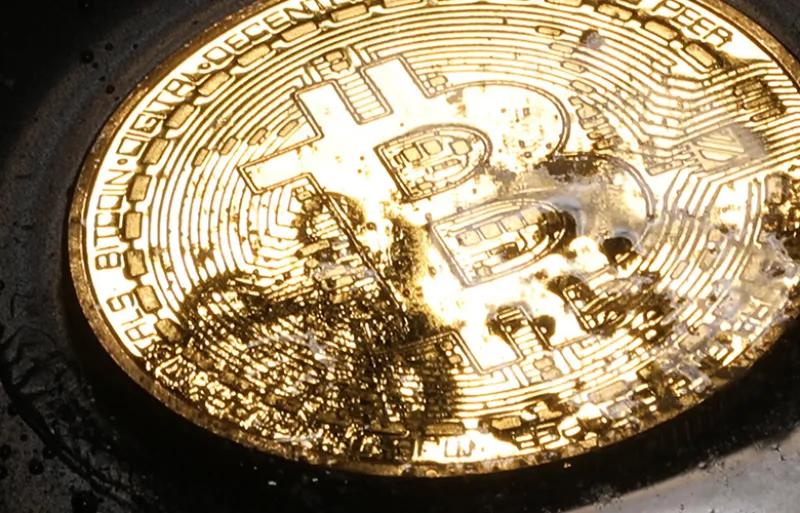Over the weekend, while conducting my weekly home straightening and sofa de-furring, I came up with an ingenious plan to get rich.
I decided to launch an initial coin offering (ICO) of secure, blockchain-transferable “tokens” or “coins.” Since most ICOs offer some tokenized version of a product, service, or asset, or a promise to invest in the same, I decided to back my Bitcoins with cat fur, a commodity I have in seemingly endless supply. And voilà! The first crypto-purrency.
Sound ridiculous? It is. But frankly, it’s not that much weirder or less financially savvy than some other crypto-offerings on the market today. I mean, come on . . . it’s pretty hard to take seriously an industry that has developed both Dogecoin (after an internet-famous Shiba Inu dog) as well as Jesus Coin, “the currency of God’s Son,” which uses the Ethereum blockchain for “fast pilgrim-to-pilgrim transactions.”
And yet, despite their resemblance to the television show South Park’s Underpants Gnomes wealth-generation strategy, cryptocurrencies are positively booming. Indeed, Bitcoin hedge funds are proliferating faster than cat hairs on my favorite black cashmere sweater. Fintech research provider Autonomous NEXT announced recently that the number of cryptocurrency hedge funds had jumped from 37 at the beginning of 2017 to 110 on October 18 to 226 as of February 15, 2018, a more than 500 percent increase in the number of funds in roughly a year. With recent volatility in the Bitcoin markets — major digital currencies plunged by as much as 50 percent in early 2018 — even more people may pile into the cryptomarkets. One anonymous trader purchased a whopping $400 million of the currency on February 18.
As with nearly everything in the world of investing that takes off with this kind of velocity, Bitcoin is making me more nervous than a long-tailed cat in a room full of rocking chairs. I haven’t seen this kind of lunacy since the days of the dot-com bubble, when eager founders thought anything could and should be monetized. Why, back in the day, one of my former employers laid acres of dedicated T1 lines on his farm with the sure knowledge that his new website, www.VultureCam.com, would be his ticket to internet riches and glory. I’m (not) surprised you haven’t heard of it.
Although my planned crypto-purrency, and my former boss’s vulture cam before it, is utterly ridiculous, it does have a few things over the typical Bitcoin offering.
For one, you know who is founding my crypto-purrency and you at least knew with whom you were transacting at VultureCam, although as a subscriber to what amounted to baby vulture voyeurism you probably wish to remain anonymous. And while we have a name of the first Bitcoin creator — Satoshi Nakamoto — we do not know who or where he or she is, nor do we even know if Nakamoto is a person or an entity. And the anonymity doesn’t stop there. There are no fewer than eight entirely anonymous Bitcoin exchanges. I simply can’t get over transacting business without a little KYC. (Somewhere in the world, a compliance officer is so proud.)
In addition, my proposed cryptocurrency has the full faith and support of actual, sustainably sourced Siamese cat hairs backing it up. While some other cryptoproviders have chained the value of their product to something tangible, like dollars, other products are based on nothing more than the users’ belief that the currency has value. And even those that claim to be linked to something more concrete, like Tether’s cryptotokens, may be gilding the Bitcoin, and their providers are faced with accusations that they do not, in fact, have the reserves to cover their outstanding tokens.
Now, since the end of gold-backed currency, one could argue that both U.S. dollars and crypto-bucks are fiat currencies, but somehow I still have more faith in a relatively stable currency backed by the U.S. government than one that is currently more volatile than me when I’m hangry and could be backed by nothing more than an internet dog meme.
Finally, Bloomberg Businessweek reported late last year that cryptocurrencies are highly concentrated among a very small number of owners, with roughly 1,000 people controlling approximately 40 percent of the world’s total Bitcoin. Ever since the tech wreck, liquidity, or more precisely the lack thereof, makes me jumpy. Whenever there’s a dearth of buyers, you can get left holding the (empty) bag.
Of course, I’m not claiming to know all there is to know about Bitcoin. I know there are legitimate ICOs, and I do generally think it’s better to be early than late in any investment strategy. However, the fact that my crypto-purrency scheme isn’t that far off from reality is more than a bit disconcerting. For now, with investors plowing between $3.5 billion and $5 billion into Bitcoin’s nascent hedge funds, I would simply urge an abundance of caution and a thorough look-through to the characteristics of the underlying assets. You might have a bit of FOMO, but a less curious cat will always live to shed another day.







